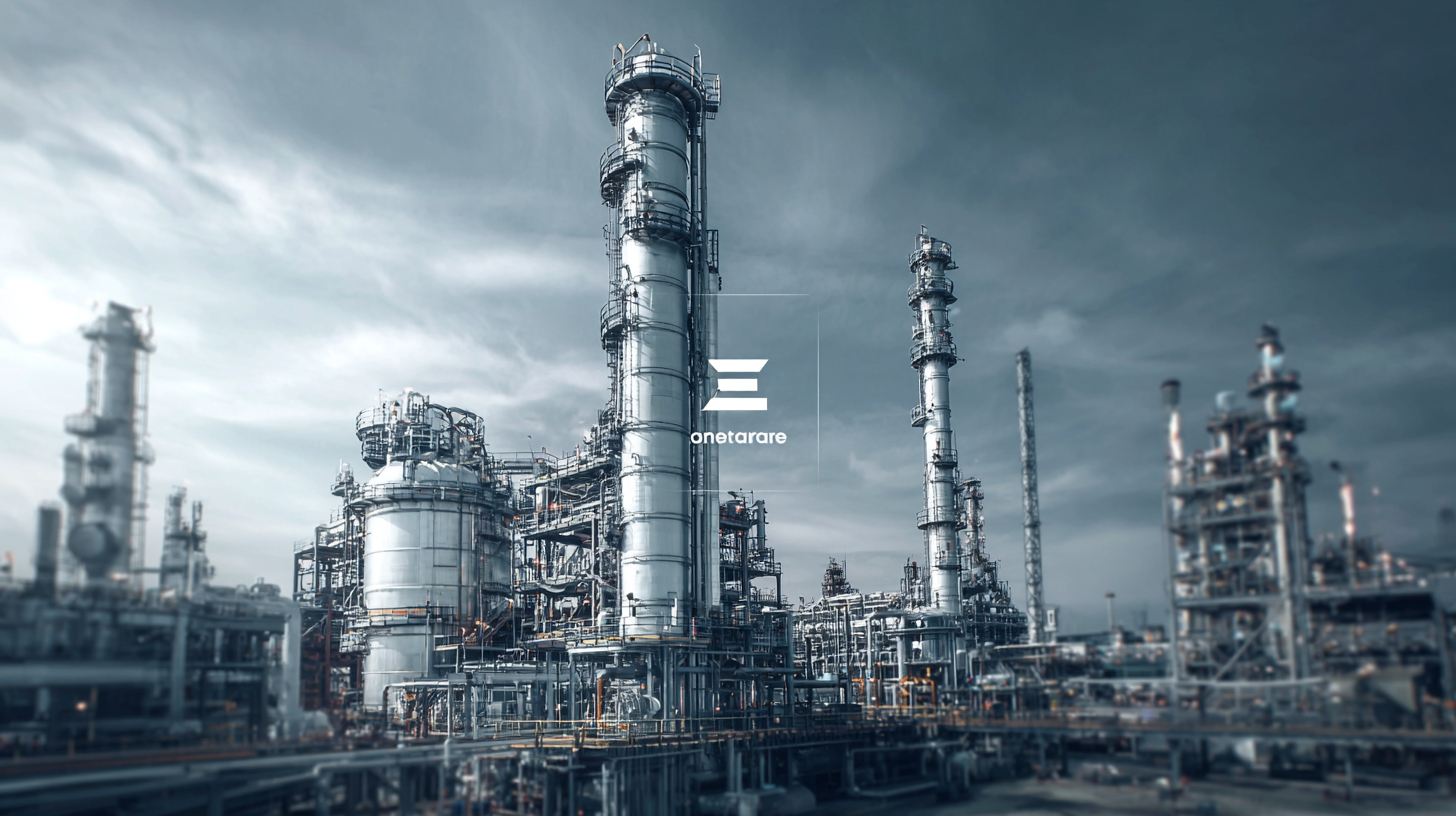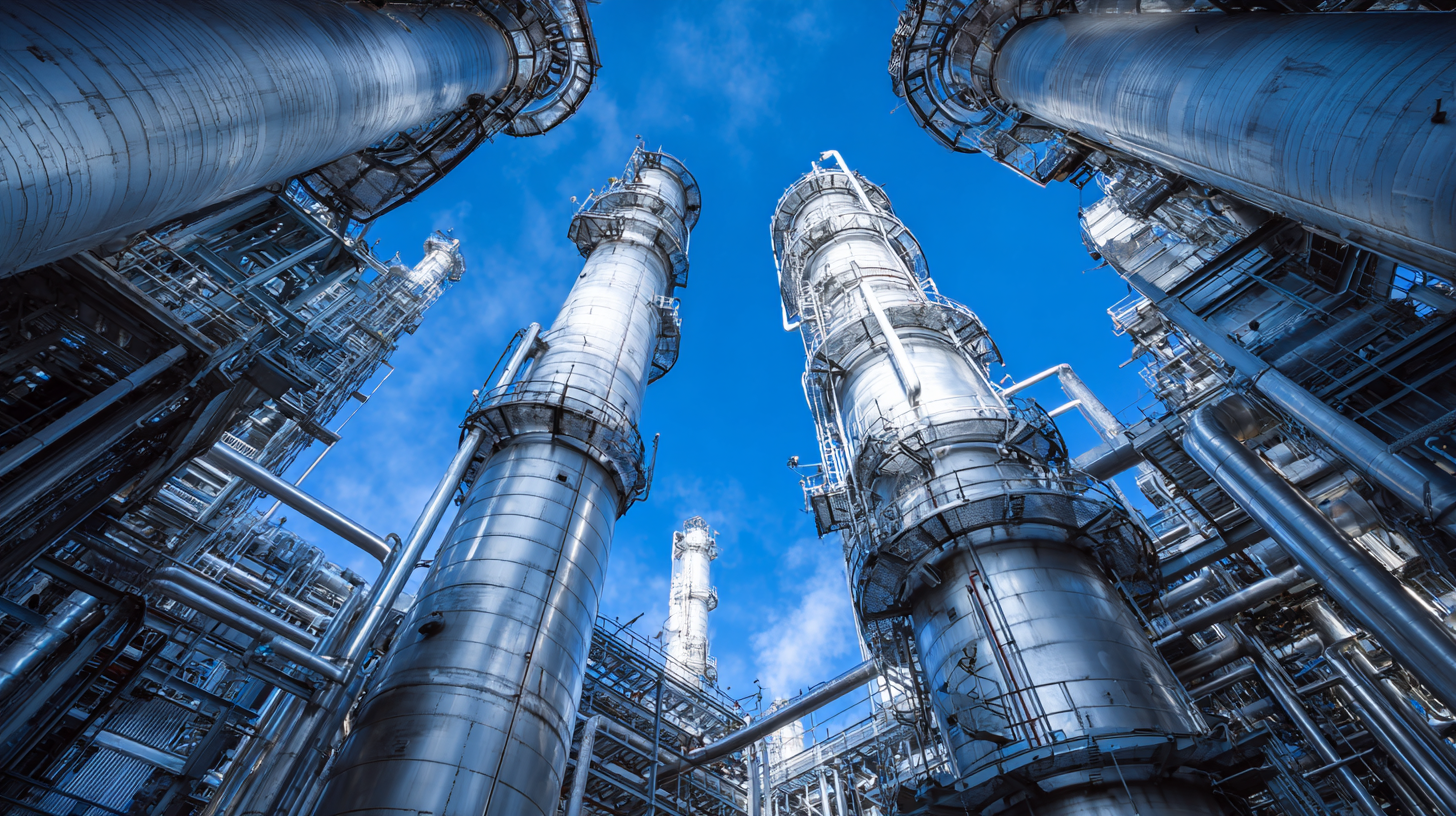
Emerging Technologies in Industrial Distillation Columns Shaping the Future of Global Procurement by 2025
As the global manufacturing landscape continues to evolve, the significance of Industrial Distillation Columns in enhancing production efficiency cannot be overstated. With the market for industrial distillation equipment expected to reach $5.4 billion by 2025, the adoption of emerging technologies within these systems is becoming pivotal for manufacturers aspiring to maintain a competitive edge. Notably, advances such as digital twin technology and real-time process analytics are transforming traditional distillation processes, enabling manufacturers to optimize performance and reduce operational costs. A recent report from MarketsandMarkets indicates that the increasing demand for purified chemicals and the growing petrochemical sector are driving innovations in distillation technology. As these trends unfold, the impact of Industrial Distillation Columns on global procurement strategies will shape the future of manufacturing, positioning factories at the forefront of international markets.

Emerging Technologies Revolutionizing Industrial Distillation Columns
Emerging technologies are at the forefront of revolutionizing industrial distillation columns, offering innovative solutions that enhance efficiency, reduce costs, and minimize environmental impact. One of the most groundbreaking advancements is the integration of advanced automation and AI-driven monitoring systems. These technologies enable real-time data analysis and predictive maintenance, ensuring optimal performance while preventing downtime and costly malfunctions. By incorporating smart sensors, companies can achieve more precise control over distillation processes, leading to higher purity and yield rates.
**Tip:** To leverage these advancements, consider investing in training programs for your workforce to ensure they are well-versed in the latest technology and can effectively interpret data analytics.
Another significant trend is the application of modular design in distillation columns, which allows for greater flexibility and scalability. These systems can be easily adapted or expanded based on evolving production needs, making them ideal for dynamic industrial environments. Furthermore, advancements in materials science have led to the development of corrosion-resistant and lightweight materials that can enhance the durability and lifespan of distillation equipment.
**Tip:** When selecting new distillation solutions, prioritize suppliers that offer modular systems and innovative materials to future-proof your operations and maintain a competitive edge.
Emerging Technologies in Industrial Distillation Columns Shaping the Future of Global Procurement by 2025
| Technology | Description | Impact on Procurement | Expected Adoption Rate by 2025 |
|---|---|---|---|
| Advanced Process Control (APC) | Utilizes algorithms and data analytics to optimize distillation processes. | Increases efficiency and reduces operational costs in procurement processes. | 60% |
| Membrane Distillation | A technology using selective membranes for the separation of components in mixtures. | Promotes sustainable procurement by reducing energy consumption. | 50% |
| AI and Machine Learning | Employs AI to predict and enhance distillation outcomes based on multiple variables. | Improves forecasting and decision-making in supply chain management. | 75% |
| IoT Sensors | Devices that provide real-time data on the distillation process. | Facilitates better monitoring and inventory management. | 70% |
| Hybrid Distillation Systems | Combines traditional and modern distillation methods for efficiency. | Enhances flexibility in sourcing and processing of materials. | 65% |
Key Innovations Driving Efficiency in Procurement Processes
 As we approach 2025, the procurement landscape is undergoing transformative shifts driven by emerging technologies, particularly within industrial distillation columns. Innovations such as generative AI, machine learning, and IoT are enhancing the efficiency and effectiveness of procurement processes. These technologies enable organizations to automate routine tasks, optimize supplier selection, and effectively manage their inventories, thereby reducing costs and speeding up delivery times.
As we approach 2025, the procurement landscape is undergoing transformative shifts driven by emerging technologies, particularly within industrial distillation columns. Innovations such as generative AI, machine learning, and IoT are enhancing the efficiency and effectiveness of procurement processes. These technologies enable organizations to automate routine tasks, optimize supplier selection, and effectively manage their inventories, thereby reducing costs and speeding up delivery times.
Moreover, recent trends in global procurement reveal a shift toward adopting commercial technology, much like Ukraine's military acquisition reforms. By harnessing innovative solutions, organizations can navigate the complexities of modern supply chains more adeptly. The focus has shifted from merely sourcing materials to strategically utilizing technology that drives value creation and supports resilience in supply networks. This evolution not only improves operational capabilities but also fosters a culture of continuous innovation, essential for maintaining competitive advantage in today's dynamic market.
Sustainability Trends Influencing Distillation Equipment Choices
As the global focus on sustainability intensifies, the distillation equipment industry is undergoing a significant transformation. According to a report by MarketsandMarkets, the global distillation equipment market is expected to reach $8.21 billion by 2025, driven by the increasing demand for sustainable practices across various sectors. It is essential for companies to adopt more energy-efficient technologies and greener materials in their distillation columns to stay competitive. Innovations such as membrane distillation and advanced process control systems are becoming integral in reducing the carbon footprint of manufacturing processes and improving energy consumption rates.
**Tip:** Companies looking to invest in distillation technology should assess the lifecycle emissions of their equipment. Choosing systems designed to minimize energy loss can lead to substantial long-term savings and contribute to broader sustainability goals.
Furthermore, industry leaders are prioritizing suppliers who demonstrate environmental responsibility in their operations. A recent study by Frost & Sullivan emphasizes that 78% of procurement professionals now consider a supplier’s sustainability reports as a critical factor in decision-making. This shift not only enhances corporate social responsibility profiles but also meets the increasing consumer demand for eco-friendly products.
**Tip:** Engage with suppliers who provide transparent sustainability metrics, as this will help ensure that your procurement strategy aligns with environmental goals while fostering robust supplier relationships.
Emerging Technologies in Industrial Distillation Columns by 2025
This chart illustrates the anticipated trends in the adoption of new technologies in industrial distillation columns, focusing on energy efficiency, automation, and sustainability practices influencing procurement decisions by 2025.
The Role of Data Analytics in Optimizing Procurement Strategies
In the rapidly evolving landscape of industrial distillation, data analytics is proving to be a game changer for procurement strategies. As companies aim to streamline operations and minimize costs, the application of data-driven insights helps in identifying trends, predicting demands, and optimizing inventory management. By harnessing real-time data, organizations can make informed decisions, improving the efficiency of procurement processes while reducing waste and operational bottlenecks.
Moreover, advanced analytics tools play a vital role in supplier evaluation and selection. Businesses can utilize performance metrics to assess potential suppliers based on reliability and quality, leading to more strategic partnerships. Predictive analytics can also forecast market fluctuations, allowing procurement teams to prepare for changes in raw material availability and pricing. By integrating these emerging technologies, organizations not only enhance their procurement strategies but also position themselves for sustained competitive advantage in a global marketplace that is increasingly dependent on efficiency and responsiveness.

Future Challenges and Opportunities in Industrial Distillation Technology
The landscape of industrial distillation technology is undergoing a transformative phase, driven by emerging technologies that promise to redefine global procurement practices by 2025. As industries grapple with increasing cost pressures and demand for efficiency, the integration of advanced materials like ceramic membranes and hybrid systems is becoming vital. According to a report by MarketsandMarkets, the global distillation equipment market is projected to reach $7.2 billion by 2026, growing at a compound annual growth rate (CAGR) of 5.8%. This growth highlights the potential for adopting innovative technologies that enhance energy efficiency and reduce operational costs.
Furthermore, the challenges posed by environmental regulations and the need for sustainable practices are pushing industries to explore greener distillation approaches. For instance, the adoption of process optimization software that utilizes AI and machine learning for real-time monitoring has shown to decrease energy consumption by up to 30%, as per a study by the International Journal of Chemical Engineering. As companies navigate these future challenges, they also encounter opportunities to enhance product purity and lower carbon footprints through the implementation of continuous distillation technologies, positioning them advantageously in a competitive market.
